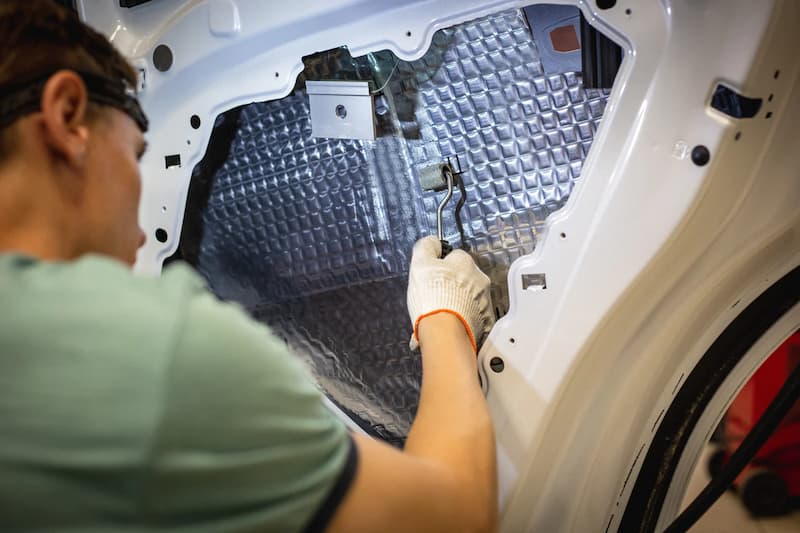Being able to hear your car running be it when driving in your neighbourhood or on the motorway is a normal thing. But when it comes to hearing outside noises be it from other cars or your tyres this is where you should have a limit. While a noisy engine can be because of all sorts of issues, road noise can only be caused by one, not having enough insulation.
Road noise can easily affect how you drive your car as well as how much you enjoy doing so. While having no road noise is rare and it shouldn’t be the case, it shouldn’t prevent you from being able to have a conversation in your car or listen to some music. You can reduce road noise without getting a luxurious vehicle by adding some soundproofing material to your car’s floor.
Benefits of Soundproofing Your Car

Noise
The level of noise you experience especially while driving at higher speeds can easily be reduced with the right car floor insulation. But you can also reduce the amount of engine bay noises that get to you with quality car floor insulation material, not just tyre noise.
Vibration
Although this is soundproofing material we’re talking about it’s not all about sound insulation. With it, you can easily reduce the amount of vibrations coming from the road or due to your car’s age. The amount of vibrations you’ll be able to keep away is going to depend on the thickness of the material.
Acoustics
Even if you don’t experience much road noise you can still benefit from automotive floor insulation. By adding it even to a newer car, you can make your sound system sound better than before. While it won’t be anything drastic it will still make you hear your favourite tunes a bit clearer.
Thermal
With the right car floor insulation material you can easily make your car have a better thermal barrier. Especially, if you plan on adding a lot of thick layers of soundproofing material, you’ll definitely make your car’s AC work a lot less.
Structural Integrity
Despite it being soft and with lots of cushioning to it, soundproofing material is actually going to improve your vehicle’s structural integrity. While this isn’t much it still counts, as car floor insulation is usually tightly sandwiched in between the floor and carpet.
Types of Soundproofing Solutions
Sheets
The easiest-to-apply soundproofing solution comes in the form of a sheet. Automotive sound deadening sheets are available in different thicknesses too which means you can decide how much you want to insulate your vehicle. They don’t require any extra tools to apply maybe except a squeegee but that’s about it. Sheets are pretty effective but not as effective as some more advanced solutions.
Butyl Rubber
Butyl rubber automotive floor insulation comes in the form of pads. They are also easy to apply but they are much better at keeping sound waves away from the cabin. This means they’re more expensive too which is why they’re not as common as sheets.
Vinyl Foam
With vinyl foam mats you get the best level of sound insulation. Their high-quality soundproofing specs are what bring up both the price and weight of this product. But if you want to add only a little bit of car floor insulation and do so effectively, then vinyl foam is the way to go.
How to Apply Sound Insulation in Your Car

1. To add soundproofing material to the floor of your car you must first remove the seats and the carpet so that you get to bare metal. Once you’re done with the first step, start measuring every corner and panel in order for the sheets or mats to have the right dimensions.
2. Once everything is measured up correctly, start cutting away pieces with those dimensions. Make sure to check if the pieces match the dimensions of the panels by placing them on top. This way when it comes to placing them on the floor you’ll know you haven’t made a mistake.
3. With everything cut up, get yourself a squeegee or a roller and start applying each piece on the floor. For mats, you might need to cover the floor with glue in order for them to stick but that’s not the case with all mats. To apply the mats or sheets you need to first place a corner on the floor and slowly lower the sheet/ mat down while pressing down with the squeegee.
4. This should be done in a smooth and controlled fashion as otherwise you’ll form air bubbles and they don’t only look bad but affect the insulation of the material. Take your time when applying both materials and make sure you start in the middle with the biggest piece first. Slowly make your way to the last corner and with it, you’re done. Just put every single interior component you removed beforehand and that’s it.
